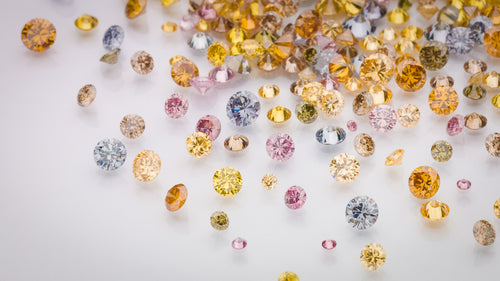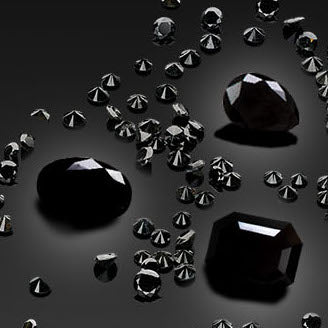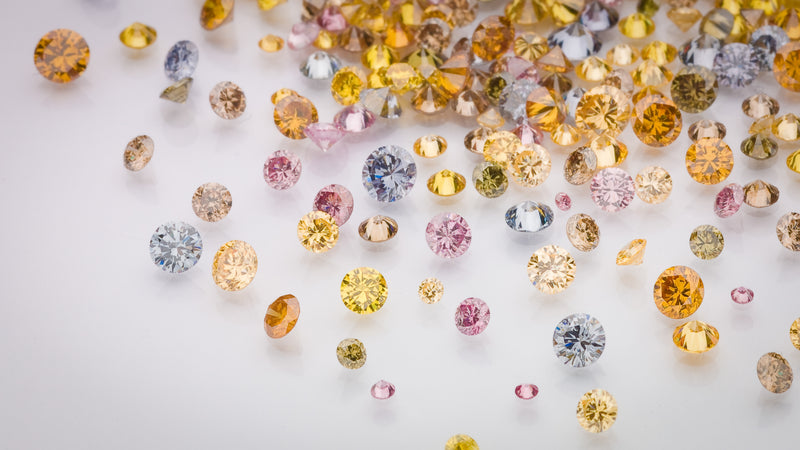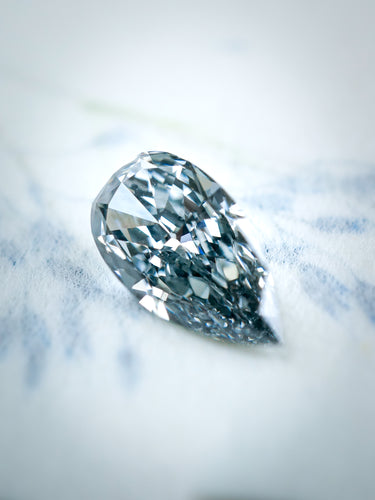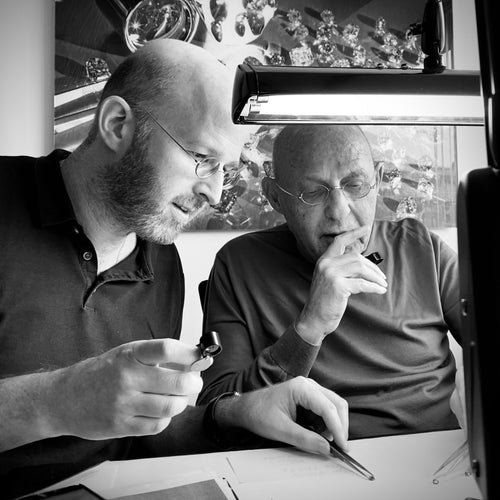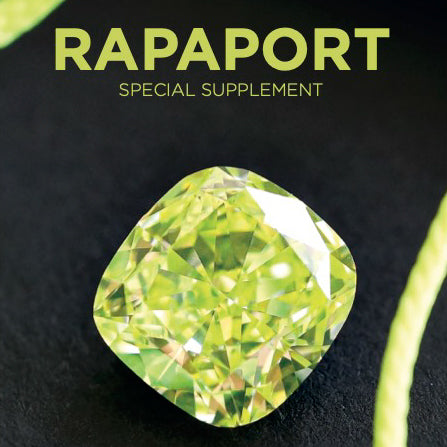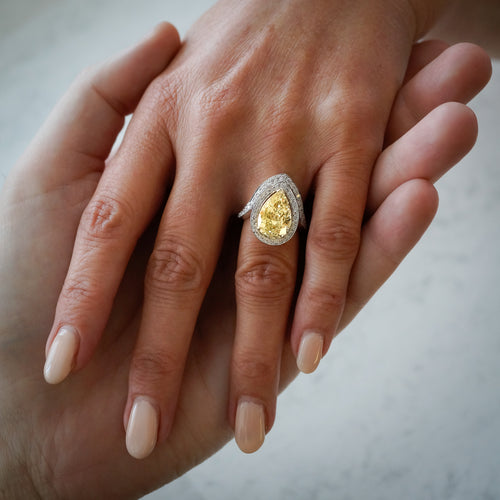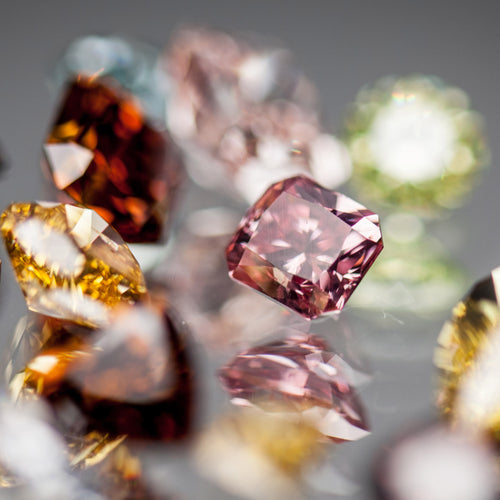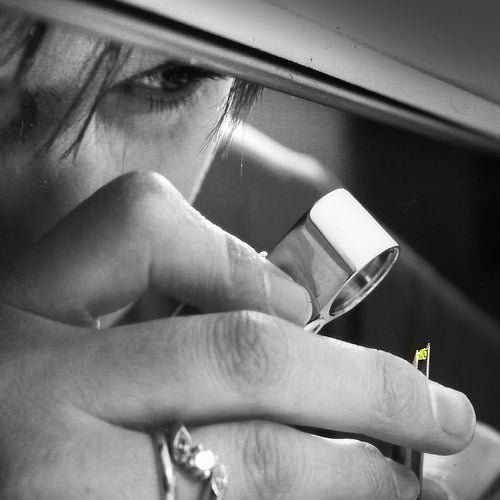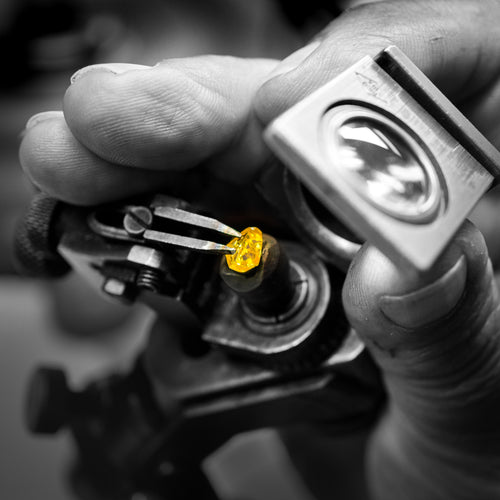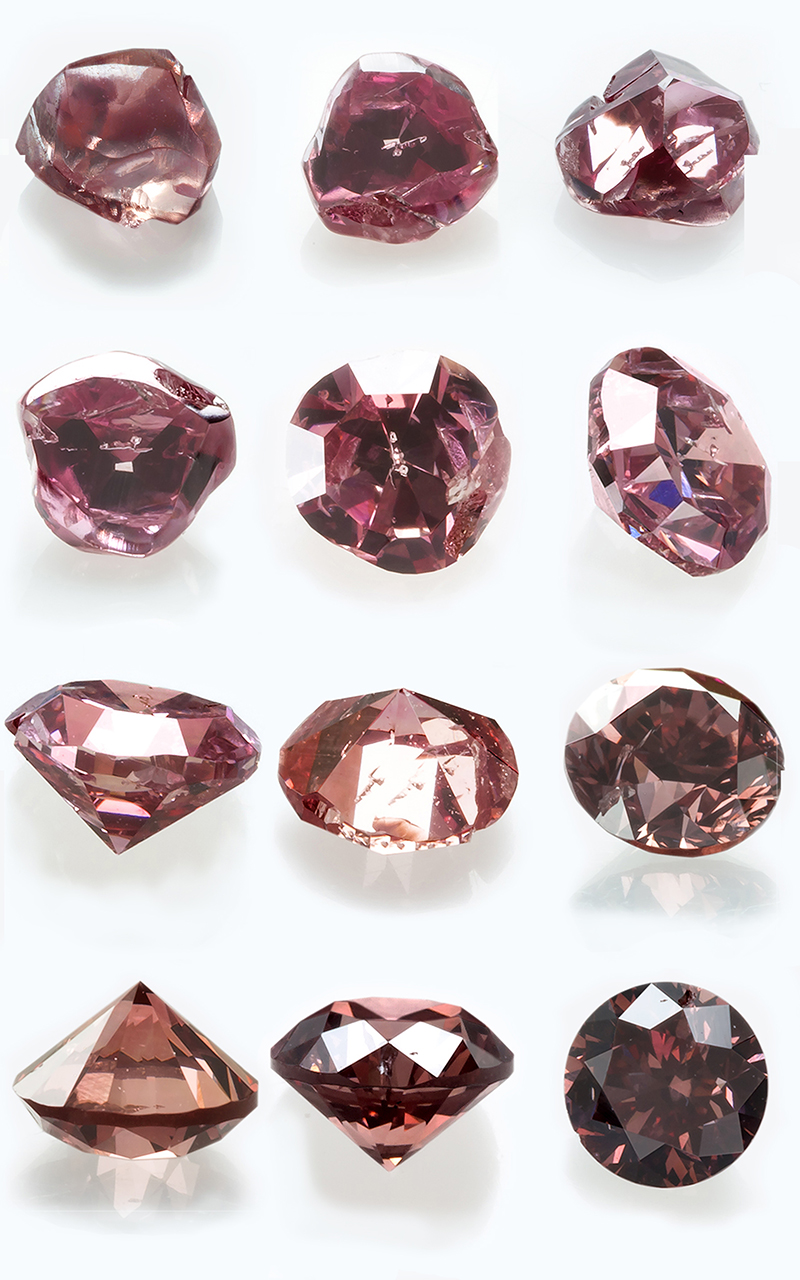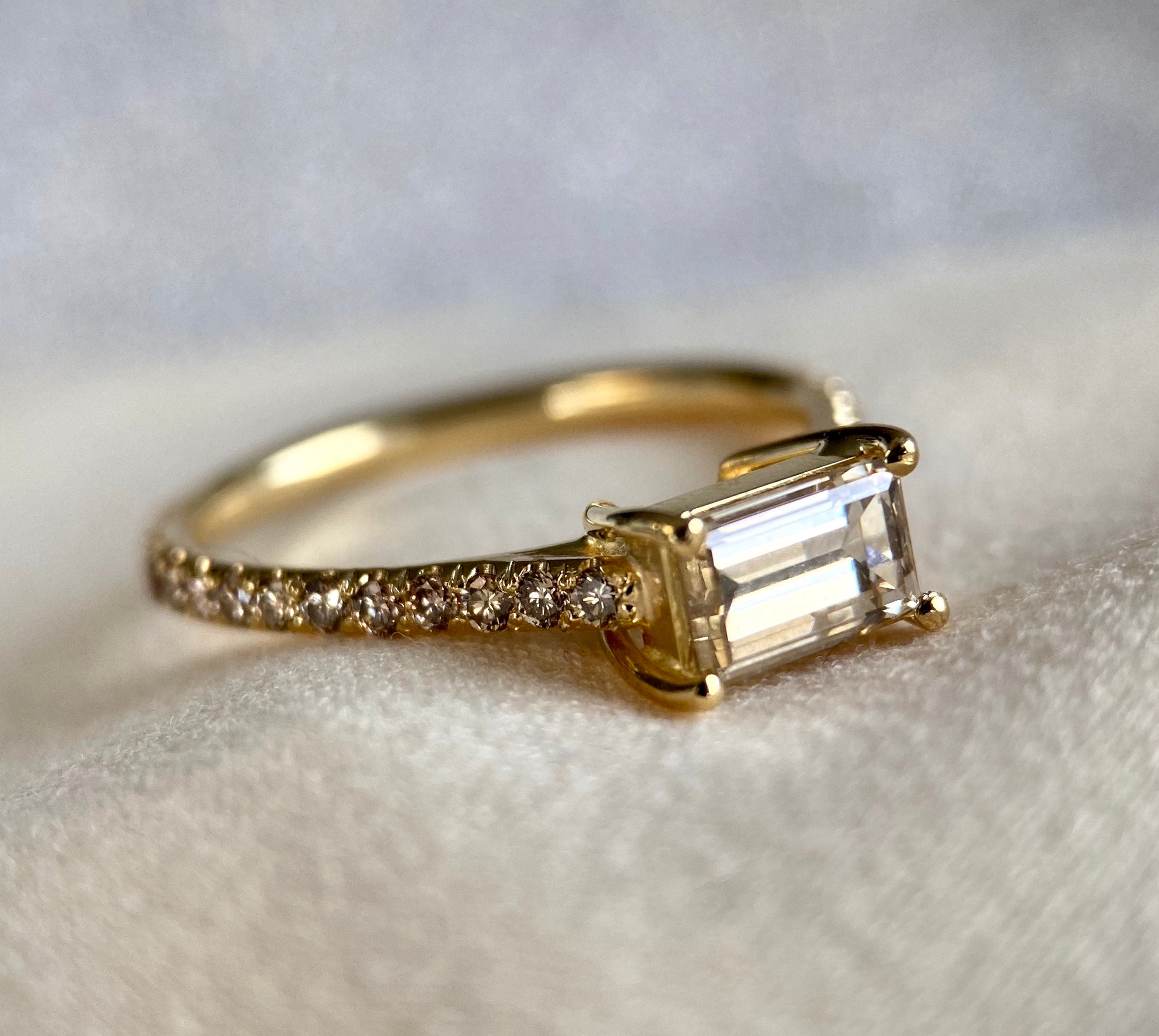

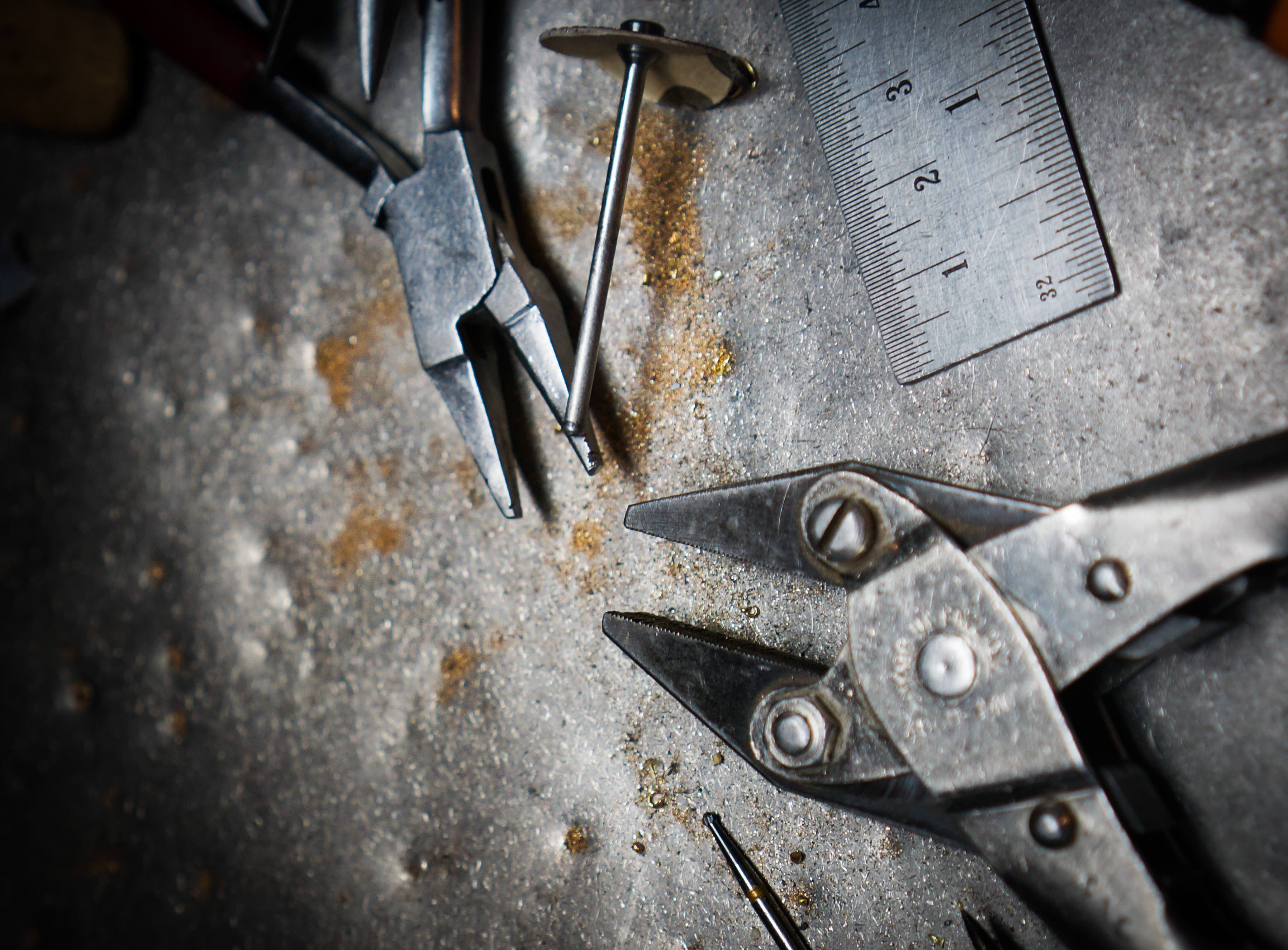
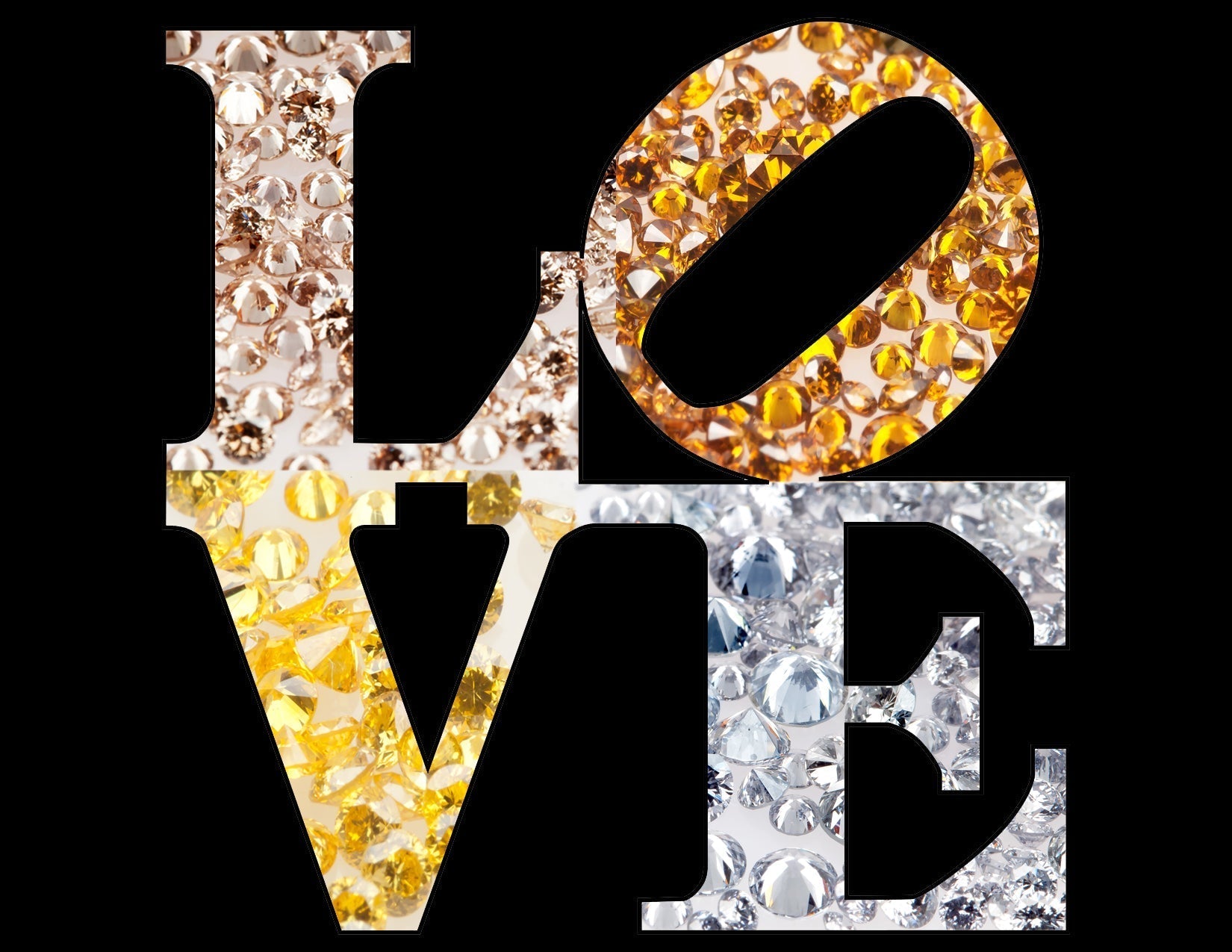
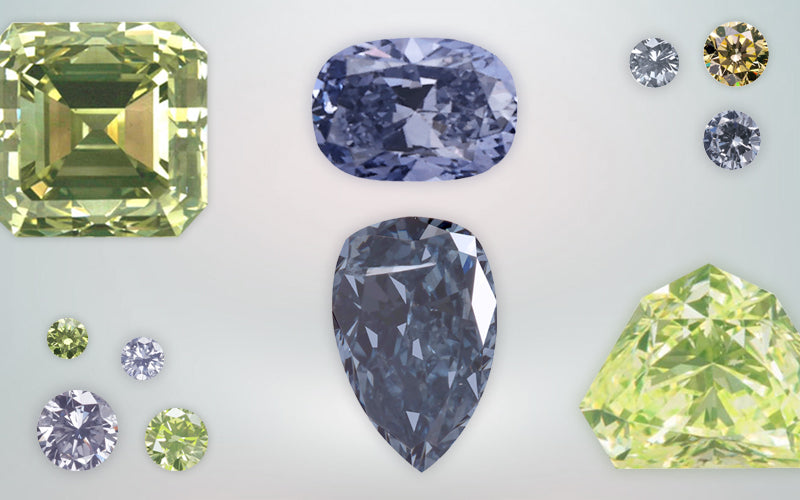

The Art of Diamond Cutting
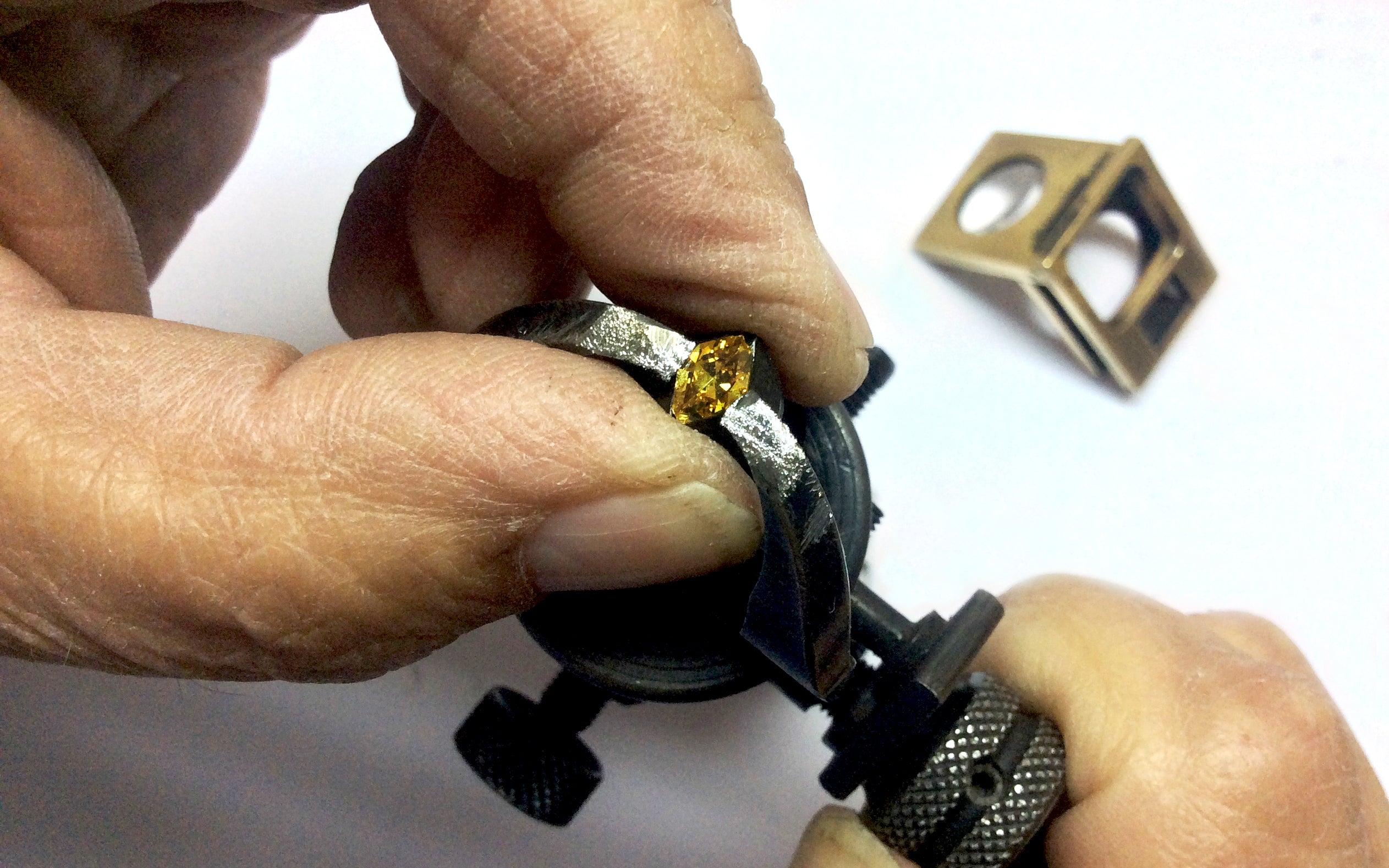
Arthur Langerman, the founder of Langerman Diamonds, cannot help but look at colored diamonds. With more than 60 years of experience, he tirelessly continues to study each diamond that passes through his hands in order to find the cut that will maximize its color, beauty, and value.The process of manufacturing a diamond, taking it from a rough stone and turning it into a gorgeous polished diamond, requires extensive experience and specific techniques applied by specialized craftsmen. While some of the steps are still done using traditional methods, others make use of the latest technologies in modeling materials, 3D renderings and laser beam technology. In order to better understand this process, Arthur Langerman details each of the steps required to shape a diamond.
The Study of the Stone
The first step requires the diamond manufacturer to carefully study the rough diamond, taking into account its color, growth lines, and inclusions. A careful evaluation of these various attributes will reveal the possibilities held within the stone. The goal is to optimize the color, clarity, and brilliance of the stone while minimizing the loss of weight. In certain instances, it may be more advantageous to yield two, smaller polished diamonds of higher quality from one stone, as opposed to one larger diamond, since two diamonds with a higher clarity grade can have more value than a larger one with a lower clarity grade. In recent years there have been machines and computer programs capable of scanning a stone and then providing algorithms that take into account weight, purity, and color (for white diamonds). These results provide valuable data for the choice of size, but the final decision always rests with the expert who will decide how to optimize the value of the stone.
Color diamonds are not colorless diamonds
The cut not only influences the purity and brilliance of the cut diamond, but also the color. The color of the diamond is literally intensified depending on the cut, which makes choosing the right cut even more
important. Contrary to colorless diamonds, where facets are used to create a play of light that enhances the whiteness of the diamond, color diamonds require a cut that enhances the full color of the stone. A brilliant cut is often considered the most suitable for bringing out the beautiful bright, white, and dazzling light of a colorless diamond, while the so-called "Fancy" cuts allow color diamonds - also called "Fancy" - to reveal their full chromatic potential. Unlike a “white” or colorless diamond the color of a fancy color diamond will be judged face-up —while looking at the table—and typically radiant cuts and their modified variants can intensify the perceived color for many light tinted yellow, pink and blue stones. This improvement in color will dramatically increase the price per carat.
Marking the Stone
The diamond dealer draws lines on the stone using indelible ink (India ink) or with a laser, depending on the inclusions and according to the best cleavage plane for the subsequent steps.
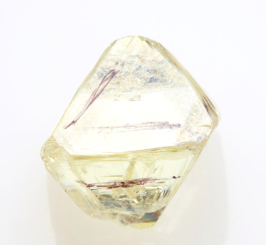
Creating a Window
The next step is to cut a small facet, called a window, into the rough diamond so that the inside of the stone can be viewed more clearly and studied before the next phase.

Cleaving and Sawing
Cleaving is an ancient method that is no longer in use today. Although simple in theory, it is a very delicate process. Using another diamond or laser, a groove is made in the stone that respects one of the four directions of crystallization (parallel to the facets of the octahedron) and a blade is inserted in the groove. A sharp blow is then delivered with a mallet to the blade, splitting the diamond as you would a wooden log, into two or more pieces. This action requires large doses of patience and absolute precision.
Sawing is also a method used to remove impurities or irregularities. This technique is done with a bronze disc coated with diamond powder that rotates at a speed of approximately 5500 rpm. The average sawing speed is 1mm per hour.
While cleaving is done parallel to the crystallite grain, the sawing technique is done against the grain. Both of these techniques are rare now and have been replaced by laser beam technology, which allows a diamond to be sawn in any direction without having to take the grain into account.
Bruting
Once the diamond has been split, it must be cut off from the larger mass while shaping the base of the diamond. During this process, the girdle, which is the edge of the plane separating the crown and the pavilion, is established. Using a technique known since the Renaissance, a diamond is made round by rubbing it with another one. One diamond is cemented into a conical sleeve, called a "dop", which is fixed onto a lathe performing a fast rotating movement. The other diamond, also mounted on a "dop", is held under the worker's arm. The friction generated between these two stones nicely rounds both diamonds. It’s important to emphasize that bruting fancy shape diamonds is done slightly differently from round shapes. Only one stone is rotated at short angles against a spinning diamond polishing wheel. This stage has also become increasingly mechanized. The stone is thus "rounded" entirely automatically with boart (a low-quality diamond) or with laser beams.
Blocking
Once the bruting is complete, the diamond is ready for the next stage, the crossworking. It will be cut following two distinct steps. First, the cutter flattens the four corners of the crown around the table and the culet — the apex of the main facets on the pavilion of a polished diamond. Then, he cuts the four bezels of the crown as well as the pavilion facets.

Polishing
Finally, the polisher cuts the last 40 facets. This step defines the appearance and sparkle of the polished diamond and is still largely performed by hand. In this final stage of the process, also known as brillianteering, the brightness and brilliance of all the facets are assured, making it one of the most important in the quality of the internal and external reflections of light by the diamond crown. The act of producing a polish on the facets of a diamond will be done with a diamond-impregnated scaife — a round, cast-iron disc charged with diamond powder used to polish a diamond. Poor polishing can result in polishing lines which will significantly impact a stone’s value and only craftsmen with a lot of expertise can produce a perfectly polished diamond that will reflect 99,9% of light shining on it. The shaping of a diamond causes it to lose 50% to 80% of its original weight. This loss is far from negligible but an optimal cut will reveal all its color while enhancing its brilliance. In summary, excellent craftsmanship, done according to the rules of the art and with passion, will refine the color of a stone and make it shine with a thousand lights.
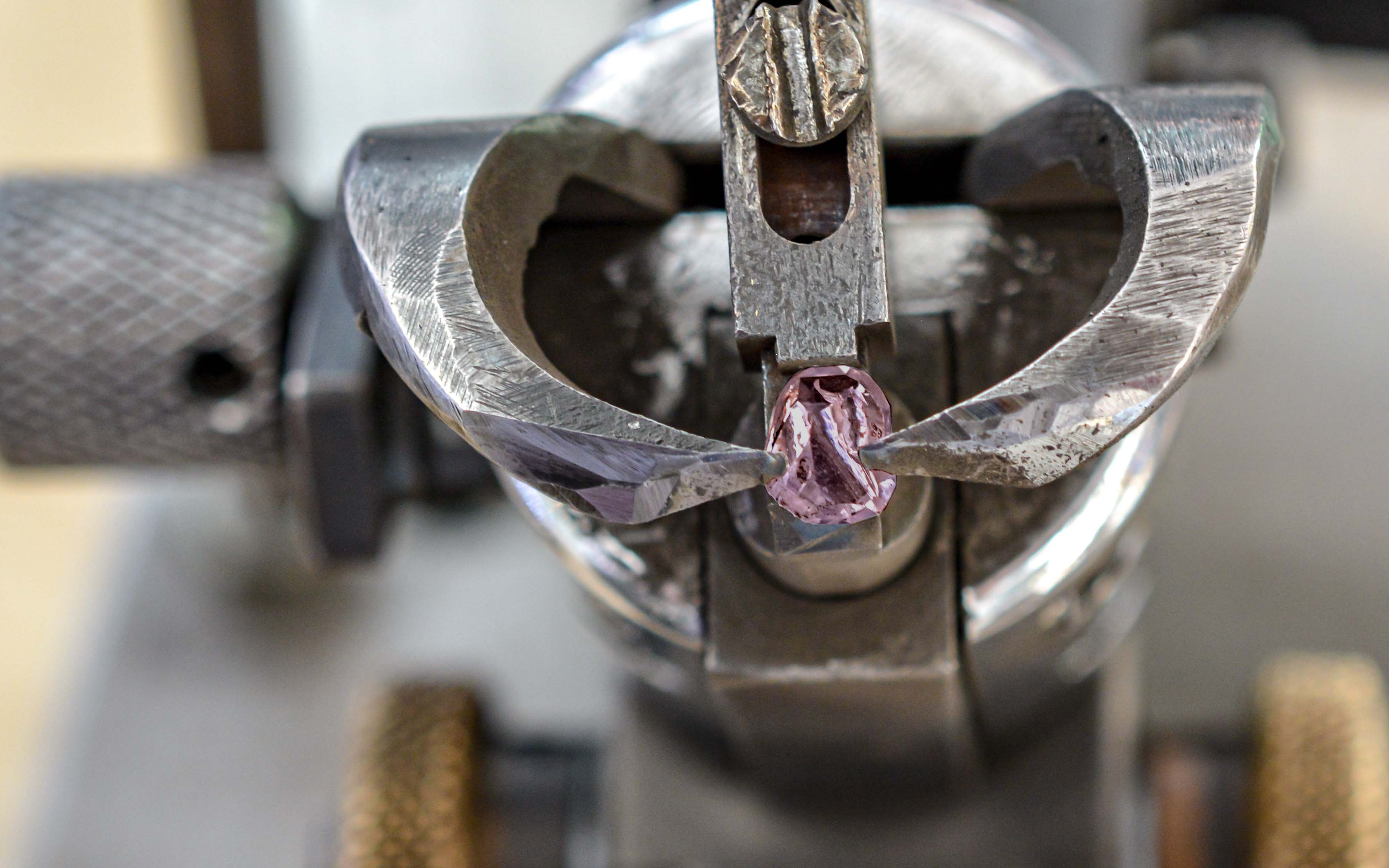
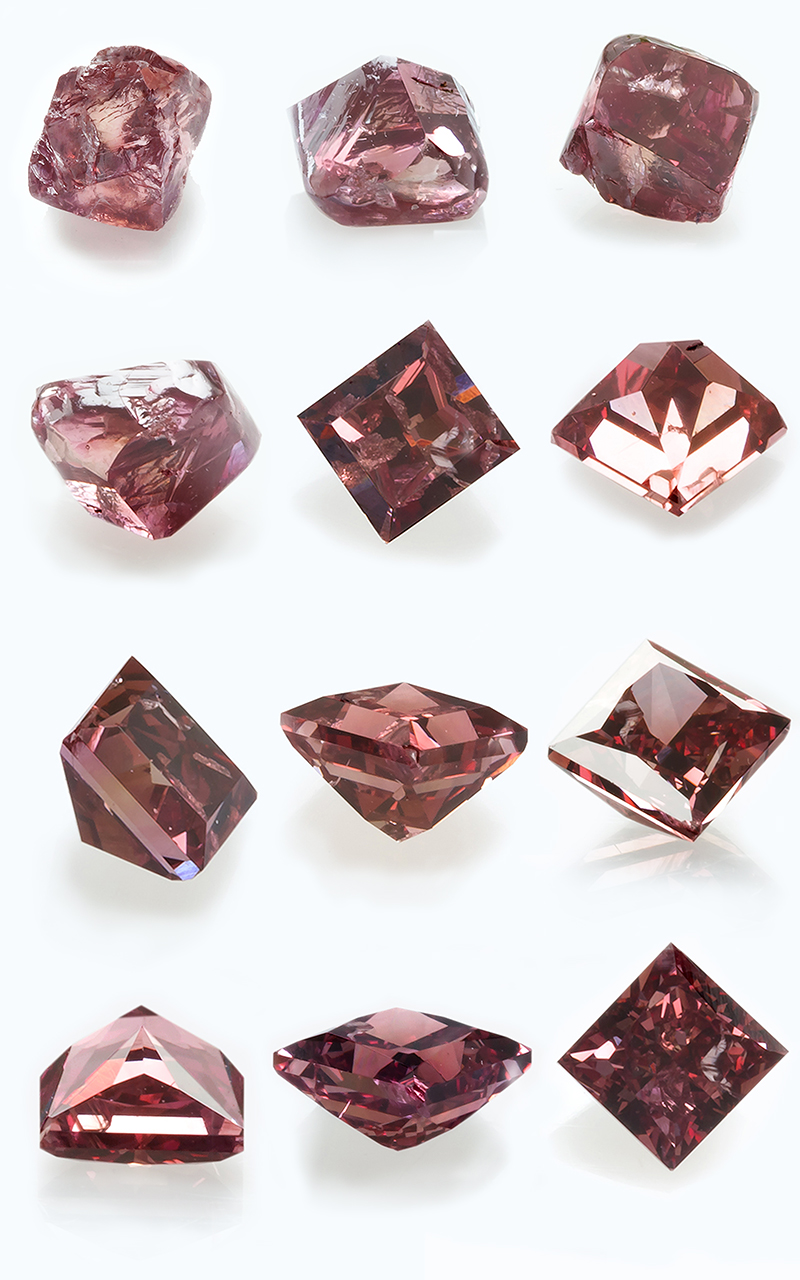
0.15 ct Square Modified Brilliant Natural Fancy Deep Brownish Orangy Pink (Even color distribution) - I2
0.17 ct Round Brilliant Natural Fancy Deep Brown- Pink (Even color distribution) - I1
Discover the video of the process from rough (9.00ct) to cut (5.10ct) for a fancy canary yellow radiant cut diamond (5.10ct).
Click for more videos.
